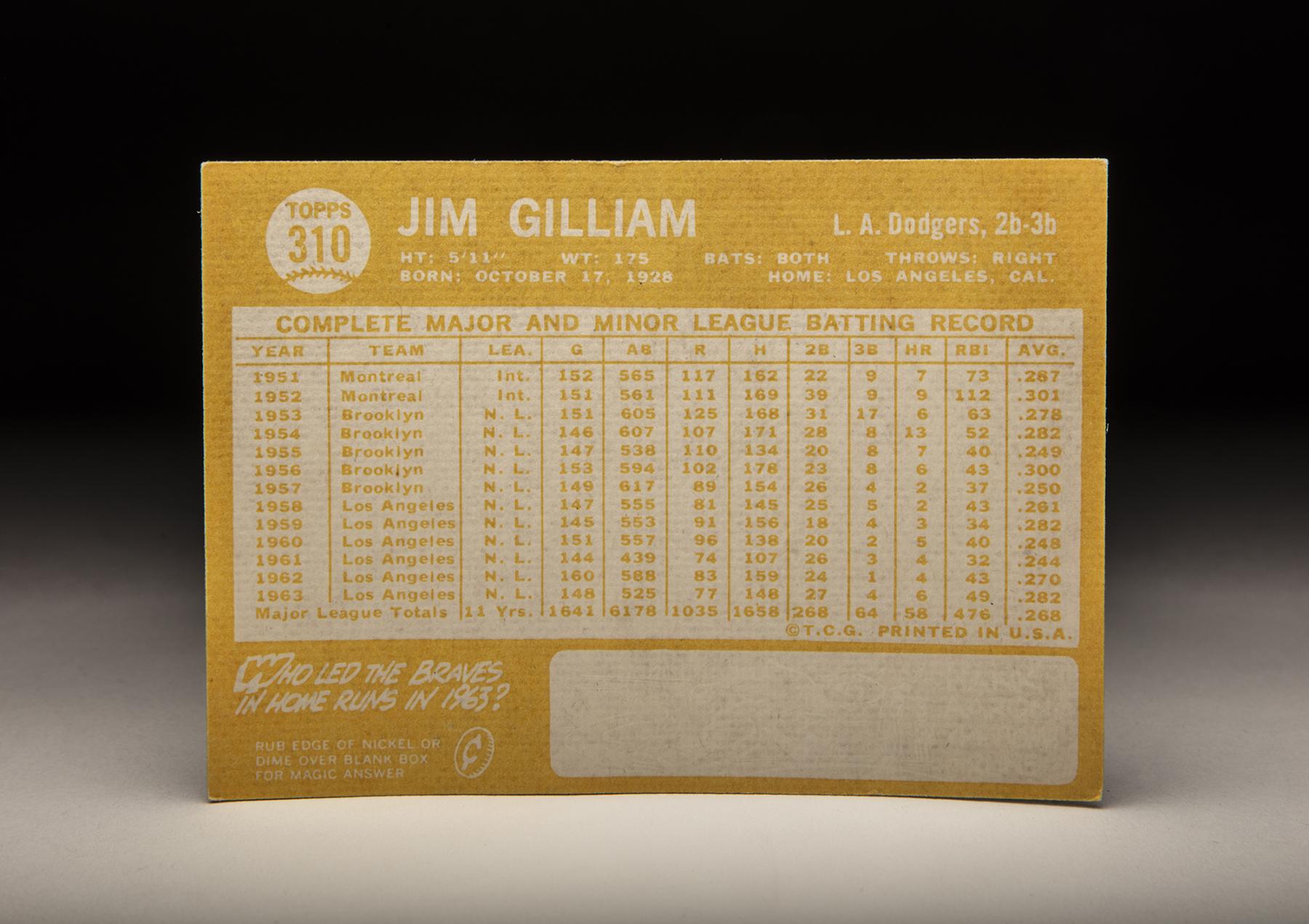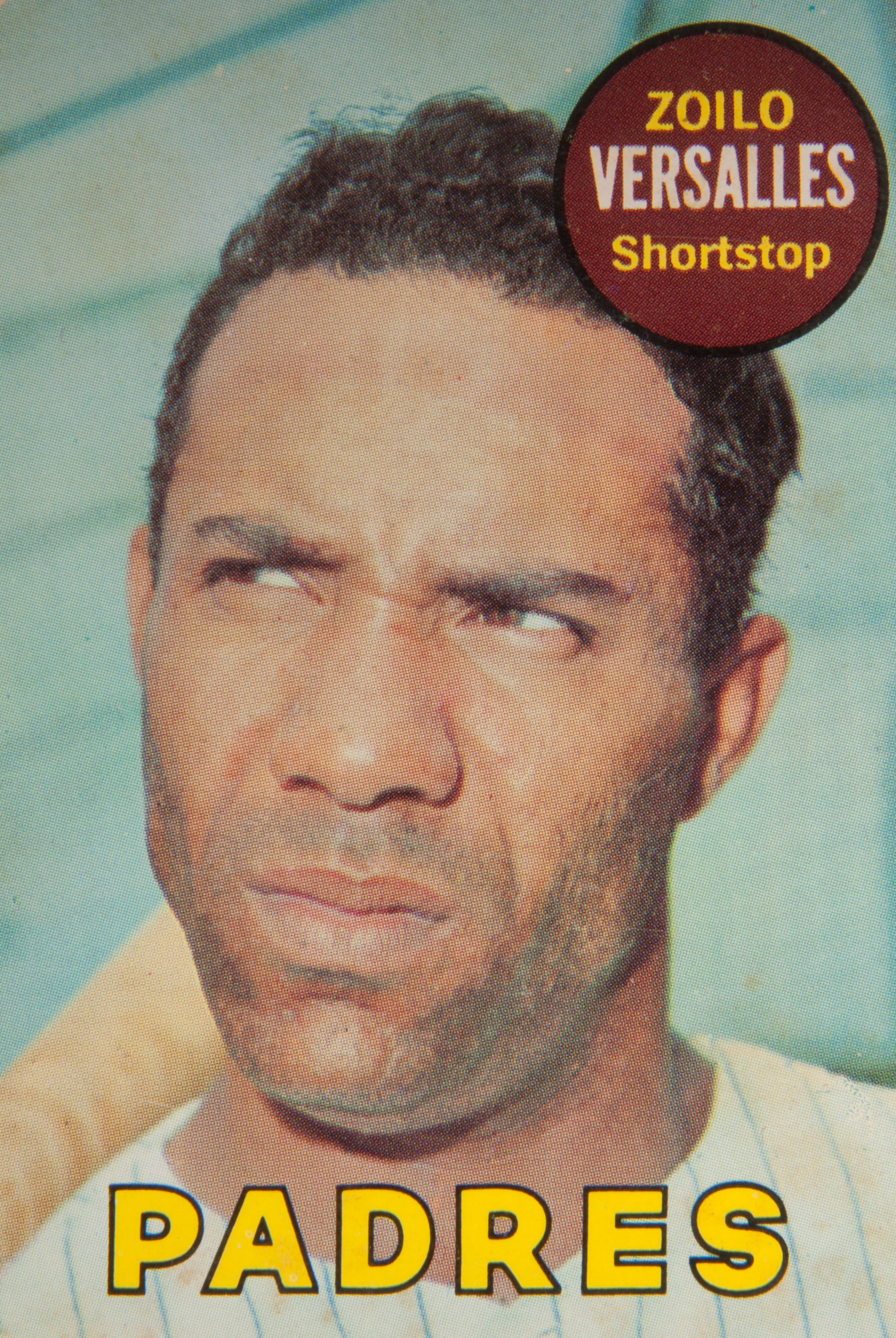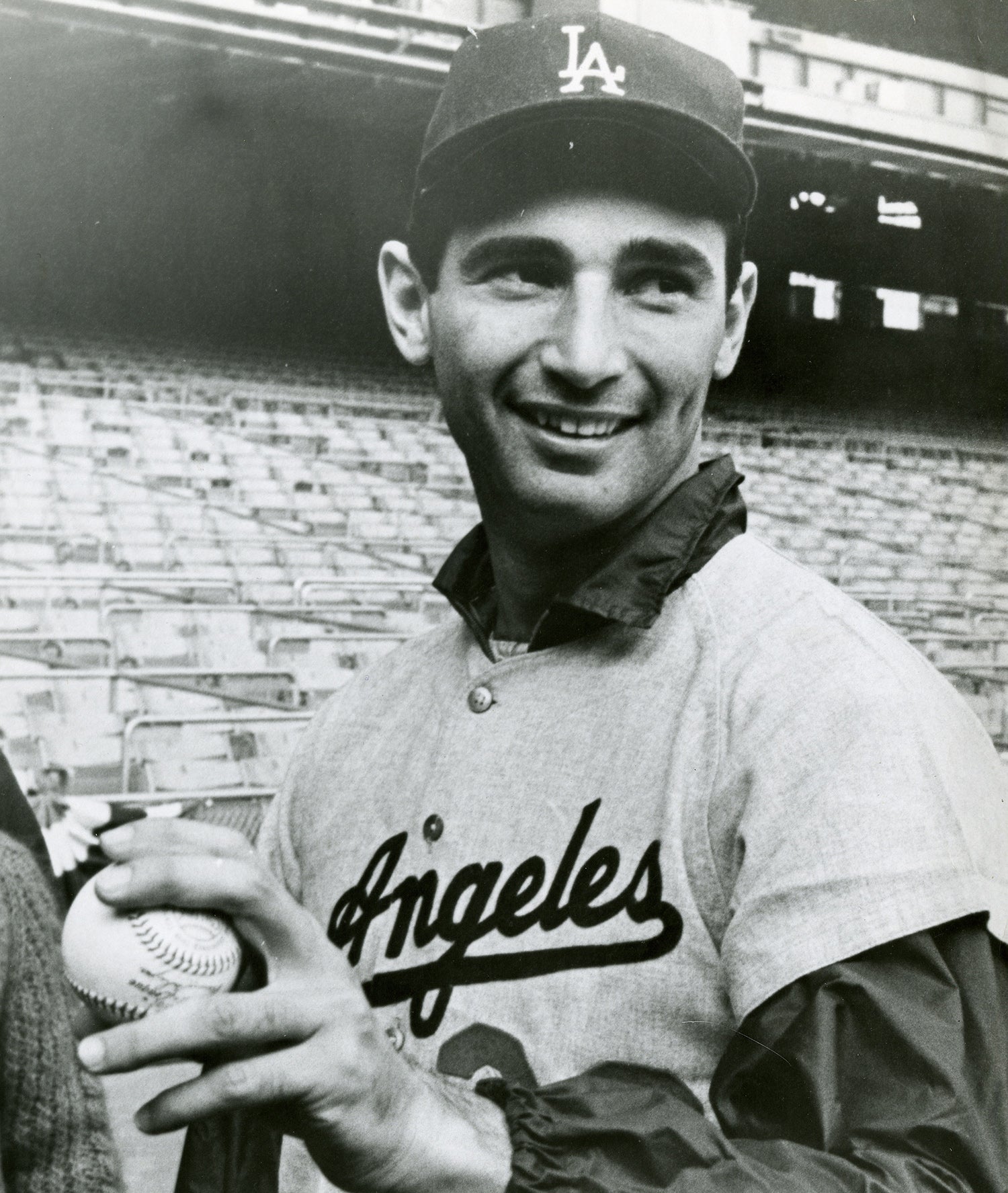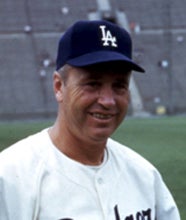- Home
- Our Stories
- #CardCorner: 1964 Topps Jim Gilliam
#CardCorner: 1964 Topps Jim Gilliam
Sitting on our family beanbag in front of our 19-inch color TV, I looked up to hear Joe Garagiola talking about Junior Gilliam – a man I did not know.
It was Oct. 10, 1978, minutes before Game 1 of the World Series between the Yankees and the Dodgers. Garagiola was explaining to the NBC-TV audience that Gilliam – who had passed away two days before – would be memorialized by the Dodgers during the World Series with a black patch on the left arm of their jerseys, featuring Gilliam’s No. 19.
Hall of Fame Membership
There is no simpler, and more essential, way to demonstrate your support than to sign on as a Museum Member.
Davey Lopes, the Dodgers second baseman, dedicated his play in the World Series to Gilliam – then hit two home runs in Game 1 to power Los Angeles to an 11-5 victory.
I remember all this as a nine-year-old boy would: In fragments that bump up against one another in my subconscious, occasionally drifting to the surface. It is quite possibly my first real memory of baseball.
Jim Gilliam, however, was much more than just a moment in time in 1978.
Gilliam’s 1964 Topps card depicts him as the Dodgers stalwart he was. Listed as a 2B-3B, Gilliam was coming off a season where he hit .282, finished sixth in the 1963 National League Most Valuable Player vote (three of the Top 5 that year were future Hall of Famers Sandy Koufax, Hank Aaron and Willie Mays) and helped the Dodgers win third World Series title in nine seasons.
Born Oct. 17, 1928, in Nashville, Tenn., James William Gilliam was an only child who worked at an early age to help support his family. But his love for baseball brought him into the orbit of local teams, and by age 17 he was playing for the Baltimore Elite Giants of the Negro National League. Gilliam’s speed and ability to switch hit made him an All-Star, and – after the Chicago Cubs gave him a look in the minors in 1950 – the Dodgers purchased the contracts of Gilliam, Joe Black and Leroy Farrell prior to the 1951 campaign.
Gilliam starred for the Triple-A Montreal Royals in 1951 and 1952, winning the International League’s Most Valuable Player Award in the latter year. By 1953, Gilliam was ready for the big leagues – and Dodgers manager Chuck Dressen gushed about his new infielder all through Spring Training. Gilliam’s promotion to the big leagues, however, meant Jackie Robinson moving to third base/left field – and Billy Cox becoming a utility player.
It was a move that some Dodgers questioned, but Gilliam fulfilled Dressen’s faith by winning the National League Rookie of the Year Award in 1953, coming to the plate a league-high 710 times while hitting .278, drawing 100 walks, scoring 125 runs and leading the majors with 17 triples. Gilliam spent the entire season as the Dodgers starting second baseman, but over the course of the next decade would evolve into one of the game’s top utility players – capable of playing second, third and the corner outfield spots.
Gilliam was instrumental in the Dodgers 1955 World Series win over the Yankees, hitting .292 while drawing eight walks for a .469 on-base percentage over seven games. Gilliam would appear in seven World Series with the Dodgers during his 14-year career, helping the team win four titles.
During this time, Gilliam often hit second in the Dodgers’ lineup – and was credited by many for helping Maury Wills amass his record 104 stolen bases in 1962.
Gilliam’s ability to take pitches and distract catchers gave Wills an advantage that he parlayed into that year’s NL Most Valuable Player Award.
After a down 1964 season where he hit just .228, Gilliam was taken off the active roster and named the Dodgers’ first base coach for 1965. But after multiple third basemen struggled at the start of the season, the Dodgers activated Gilliam in late May – and he hit .280 over 111 games, even earning some back-of-the ballot NL MVP consideration.
In the World Series against the Twins, Gilliam played in all seven games to help the Dodgers win the Fall Classic.
In the fifth inning of Game 7, Gilliam made a critical play at third base with two on and one out in a 2-0 game, robbing Zoilo Versalles on what looked to be a sure double – getting a force out at third base on what was the Twins’ final threat of the day against Sandy Koufax.
The glove Gilliam used in that game is on display in the Hall of Fame’s Autumn Glory exhibit.
After serving as a player/coach in 1966, Gilliam retired from active duty, but remained the Dodgers first base coach throughout the rest of manager Walter Alston’s career and was retained as a coach for the first two seasons of Tommy Lasorda’s tenure.
Junior Gilliam was a star for the Triple-A Montreal Royals in 1951 and 1952, and he maintained his excellence in the majors, where he won Rookie of the Year honors in 1953. Gilliam later became a longtime coach for the Dodgers under Walter Alston and Tommy Lasorda. (National Baseball Hall of Fame and Museum)
On Sept. 15, 1978, after driving Lasorda to the ballpark, Gilliam suffered a cerebral hemorrhage and slipped into a coma. His death three weeks later brought and outpouring of tributes from the baseball community.
All this was unknown to me, however, on Oct. 10, 1978. Later, I would learn the heroic details of Gilliam’s career and read about him in countless books about the 1950s Dodgers. But in front of that television set prior to Game 1 of the 1978 World Series, Jim Gilliam – for reasons I will never know – became my intro into the National Pastime.
It would be difficult to pick a better player with which to start.
Craig Muder is the director of communications for the National Baseball Hall of Fame and Museum
Related Stories
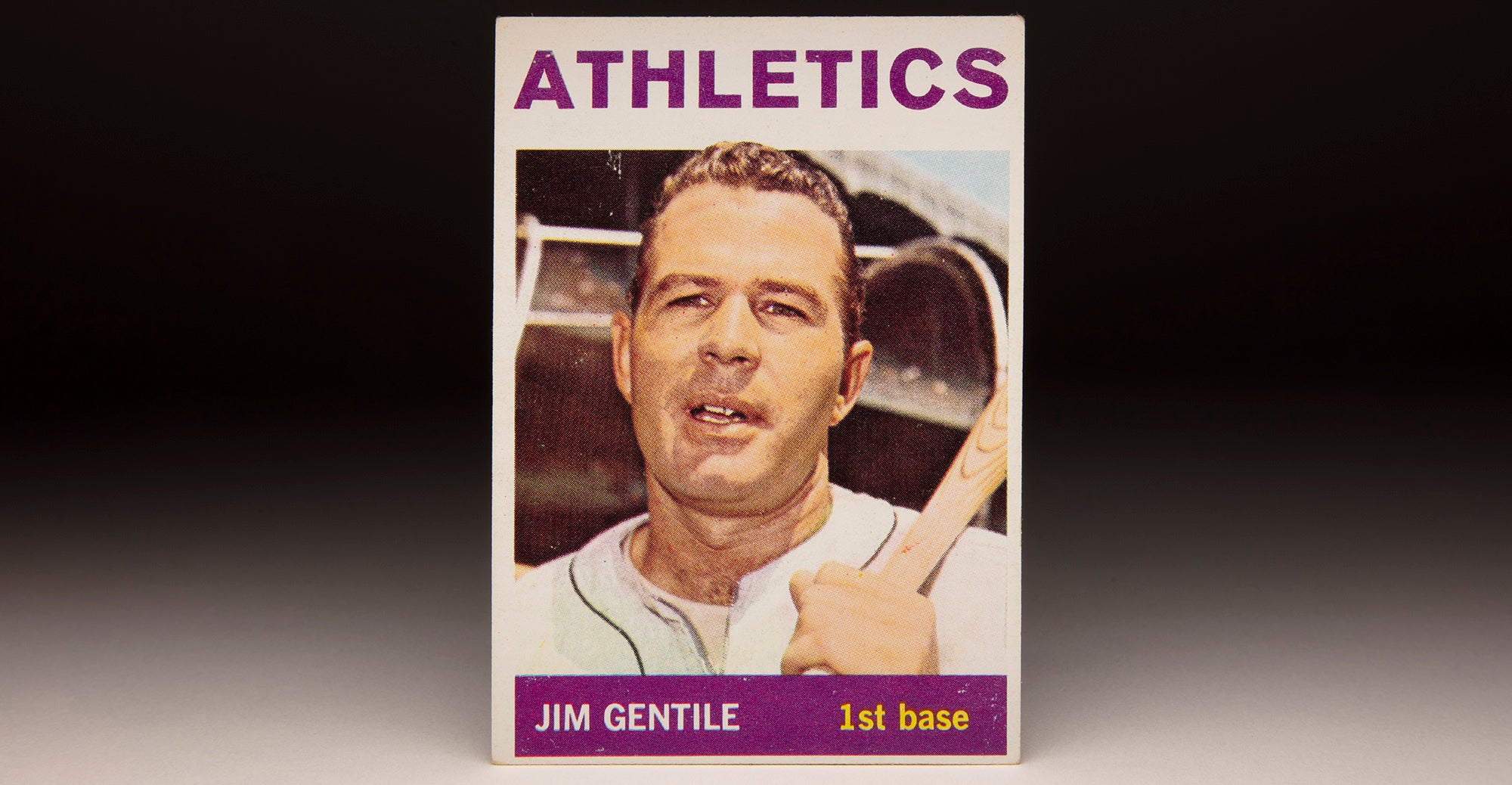
#CardCorner: 1964 Topps Jim Gentile
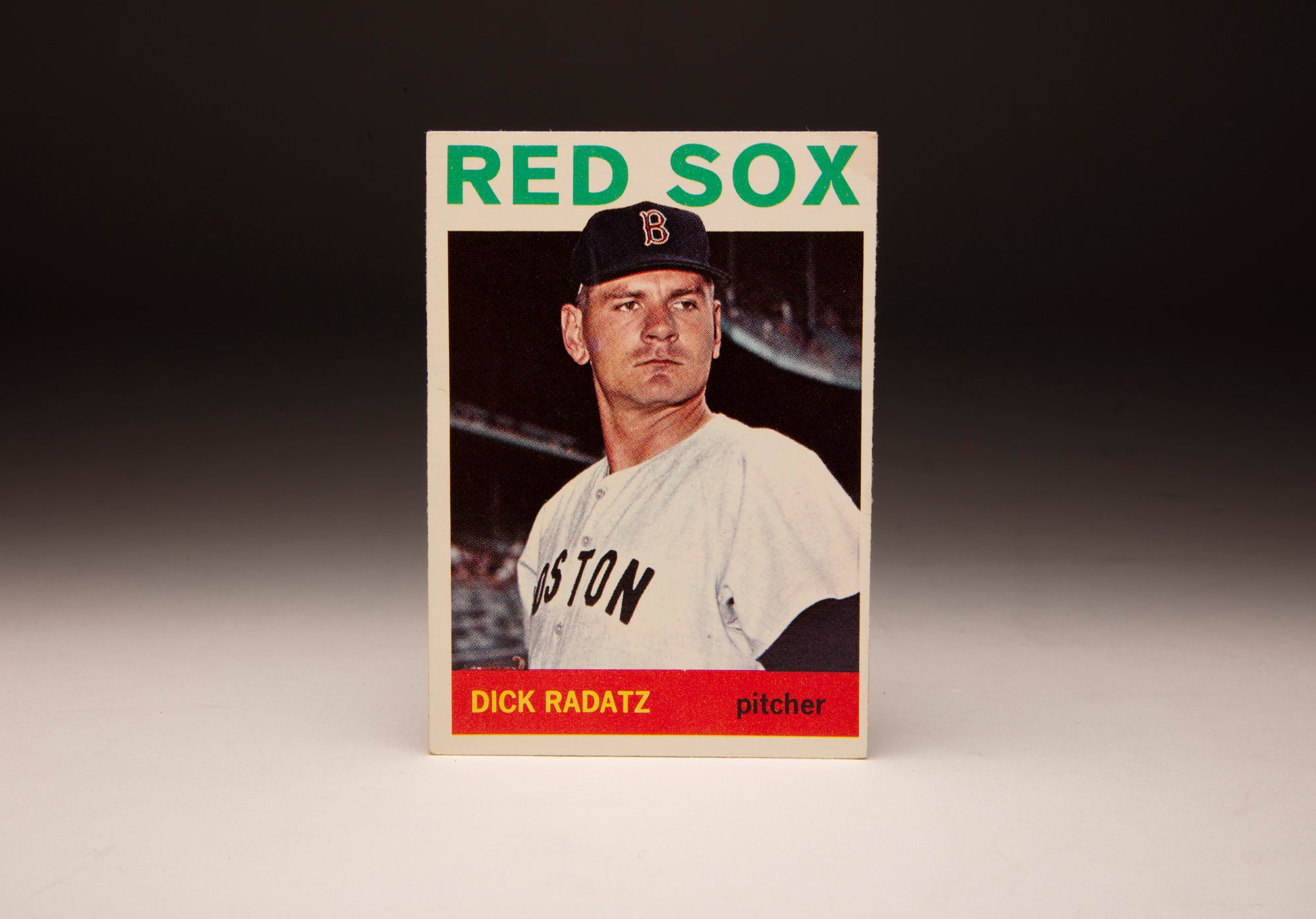
#CardCorner: 1964 Topps Dick Radatz
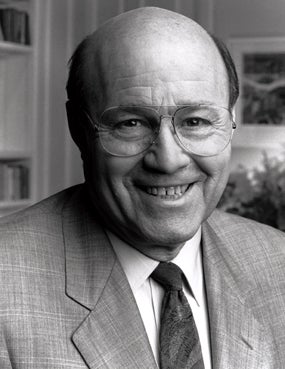
2014 Buck O'Neil Award Winner Joe Garagiola

#CardCorner: 1964 Topps Jim Gentile

#CardCorner: 1964 Topps Dick Radatz



